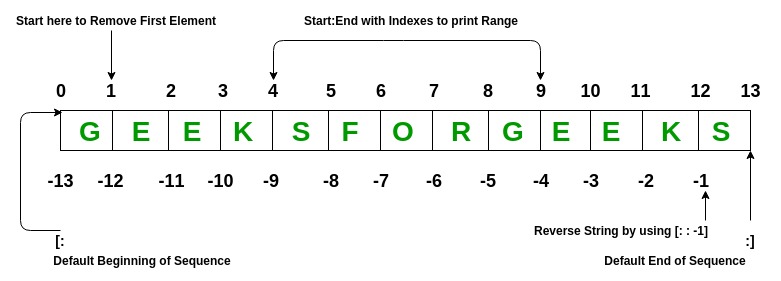Python Tuples
Tuple is a collection of Python objects much like a list. The sequence of values stored in a tuple can be of any type, and they are indexed by integers.
Values of a tuple are syntactically separated by ‘commas’. Although it is not necessary, it is more common to define a tuple by closing the sequence of values in parentheses. This helps in understanding the Python tuples more easily.
Creating a Tuple
In Python, tuples are created by placing a sequence of values separated by ‘comma’ with or without the use of parentheses for grouping the data sequence.
Note: Creation of Python tuple without the use of parentheses is known as Tuple Packing.
Python program to demonstrate the addition of elements in a Tuple.
- Python3
Output:
Initial empty Tuple:
()
Tuple with the use of String:
('ram', 'For')
Tuple using List:
(1, 2, 4, 5, 6)
Tuple with the use of function:
('r', 'a', 'm') Creating a Tuple with Mixed Datatypes.
Tuples can contain any number of elements and of any datatype (like strings, integers, list, etc.). Tuples can also be created with a single element, but it is a bit tricky. Having one element in the parentheses is not sufficient, there must be a trailing ‘comma’ to make it a tuple.
- Python3
Output:
Tuple with Mixed Datatypes: (5, 'Welcome', 7, 'ujjwal')
Tuple with nested tuples:
((0, 1, 2, 3), ('python', 'ujjwal'))Tuple with repetition:
('ujjwal', 'ujjwal', 'ujjwal')Tuple with a loop
('ujjwal',)
(('ujjwal',),)
((('ujjwal',),),)
(((('ujjwal',),),),)
((((('ujjwal',),),),),)Complexities for creating tuples:
Time complexity: O(1)
Auxiliary Space : O(n)
Accessing of Tuples
Tuples are immutable, and usually, they contain a sequence of heterogeneous elements that are accessed via unpacking or indexing (or even by attribute in the case of named tuples). Lists are mutable, and their elements are usually homogeneous and are accessed by iterating over the list.
Note: In unpacking of tuple number of variables on the left-hand side should be equal to a number of values in given tuple a.
- Python3
Output:
First element of Tuple: u Values after unpacking: a
b
c
Complexities for accessing elements in tuples:
Time complexity: O(1)
Space complexity: O(1)
Concatenation of Tuples
Concatenation of tuple is the process of joining two or more Tuples. Concatenation is done by the use of ‘+’ operator. Concatenation of tuples is done always from the end of the original tuple. Other arithmetic operations do not apply on Tuples.
Note- Only the same datatypes can be combined with concatenation, an error arises if a list and a tuple are combined.

- Python3
Output:
Tuple 1:
(0, 1, 2, 3)
Tuple2:
('ram', 'For', 'ram')Tuples after Concatenation: (0, 1, 2, 3, 'ram', 'For', 'ram')
Time Complexity: O(1)
Auxiliary Space: O(1)
Slicing of Tuple
Slicing of a Tuple is done to fetch a specific range or slice of sub-elements from a Tuple. Slicing can also be done to lists and arrays. Indexing in a list results to fetching a single element whereas Slicing allows to fetch a set of elements.
Note- Negative Increment values can also be used to reverse the sequence of Tuples.

- Python3
Output:
Removal of First Element:
('E', 'E', 'K', 'S', 'F', 'O', 'R', 'G', 'E', 'E', 'K', 'S')
Tuple after sequence of Element is reversed:
('S', 'K', 'E', 'E', 'G', 'R', 'O', 'F', 'S', 'K', 'E', 'E', 'G')
Printing elements between Range 4-9:
('S', 'F', 'O', 'R', 'G')Complexities for traversal/searching elements in tuples:
Time complexity: O(1)
Space complexity: O(1)
Deleting a Tuple
Tuples are immutable and hence they do not allow deletion of a part of it. The entire tuple gets deleted by the use of del() method.
Note- Printing of Tuple after deletion results in an Error.
- Python
Traceback (most recent call last):
File “/home/efa50fd0709dec08434191f32275928a.py”, line 7, in
print(Tuple1)
NameError: name ‘Tuple1’ is not defined
Built-In Methods
| Built-in-Method | Description |
|---|---|
| index( ) | Find in the tuple and returns the index of the given value where it’s available |
| count( ) | Returns the frequency of occurrence of a specified value |
Built-In Functions
| Built-in Function | Description |
|---|---|
| all() | Returns true if all element are true or if tuple is empty |
| any() | return true if any element of the tuple is true. if tuple is empty, return false |
| len() | Returns length of the tuple or size of the tuple |
| enumerate() | Returns enumerate object of tuple |
| max() | return maximum element of given tuple |
| min() | return minimum element of given tuple |
| sum() | Sums up the numbers in the tuple |
| sorted() | input elements in the tuple and return a new sorted list |
| tuple() | Convert an iterable to a tuple. |
Tuples VS Lists:
| Similarities | Differences |
Functions that can be used for both lists and tuples: len(), max(), min(), sum(), any(), all(), sorted() | Methods that cannot be used for tuples: append(), insert(), remove(), pop(), clear(), sort(), reverse() |
Methods that can be used for both lists and tuples: count(), Index() | we generally use ‘tuples’ for heterogeneous (different) data types and ‘lists’ for homogeneous (similar) data types. |
| Tuples can be stored in lists. | Iterating through a ‘tuple’ is faster than in a ‘list’. |
| Lists can be stored in tuples. | ‘Lists’ are mutable whereas ‘tuples’ are immutable. |
| Both ‘tuples’ and ‘lists’ can be nested. | Tuples that contain immutable elements can be used as a key for a dictionary. |